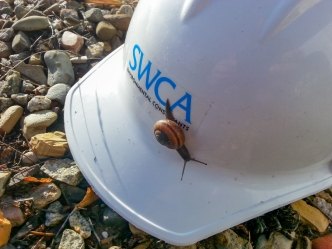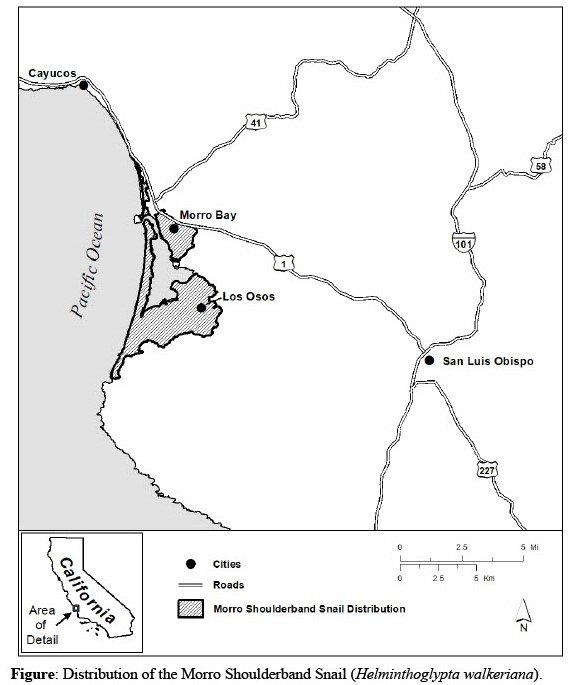
On February 3, 2022, the United States Fish and Wildlife Service (Service) announced that the Morro shoulderband snail is no longer in danger of extinction and the Service is improving the snail’s listing status from endangered to threatened under the Endangered Species Act (ESA).
The change in status is a result of the Service considering new data collected in collaboration with local municipalities, conservation organizations, SWCA, and other entities. When the snail was listed, it was thought that only a few hundred individuals remained in limited areas. The new data shows that there are thousands of individuals occurring in varied habitats.
The downlisting is accompanied by a special rule under section 4(d) of the ESA. The special rule exempts from the ESA’s prohibitions take of the snail that is a result of native habitat restoration activities and/or fire hazard reduction activities. Other activities that cause take still require authorization from the Service.
Will My Projects be Affected?
The snail occurs in areas of Morro Bay inclusive of Los Osos on the central coast of California. The snail occurs in areas with Baywood fine sand and dune land soils that support suitable shelter habitat. If your project occurs in the Morro Bay or Los Osos areas, will result in disturbance to Baywood fine sand or dune land soils, and is not associated with habitat restoration, conservation, or fire hazard reduction, there is a high likelihood that your project will affect snails and could trigger the need for a permit or authorization from the Service.

SWCA Can Help
SWCA has been involved with the snail since the species was listed in 1994, and our survey work provided data that helped downlist the species. We have worked with multiple non-profit conservation organizations to establish Recovery Action Plans for the snail to provide for habitat restoration, land preservation, and recovery projects, and developed and implemented Habitat Conservation Plans for non-federal projects that involved incidental take of the snail. We are also involved in the development of Community Wildfire Protection Plans throughout the west. Our expertise with the snail, other ESA-protected species, habitat and ecological restoration, ESA procedures, and wildfire protection planning can help your project navigate ESA compliance with this and many other listed species.
If you have questions or need more information, please contact us here.